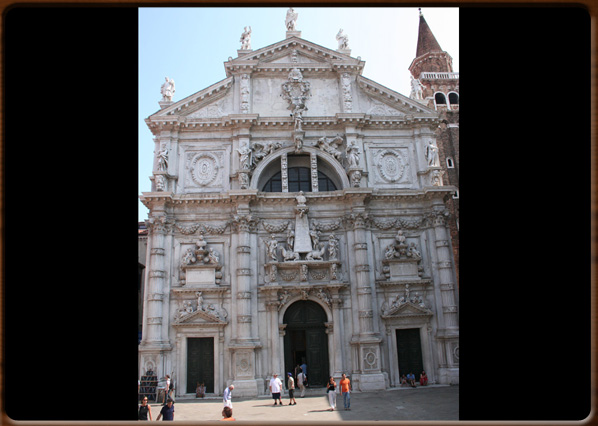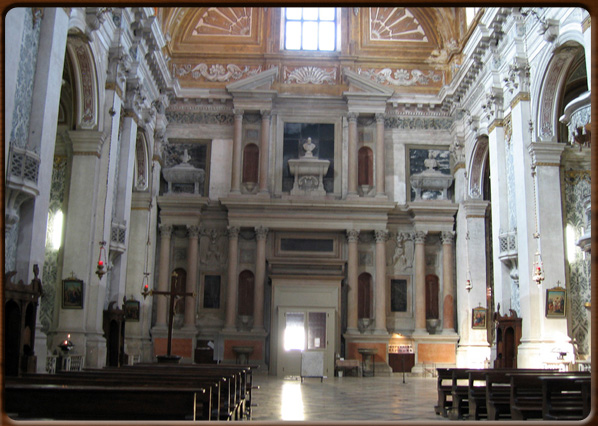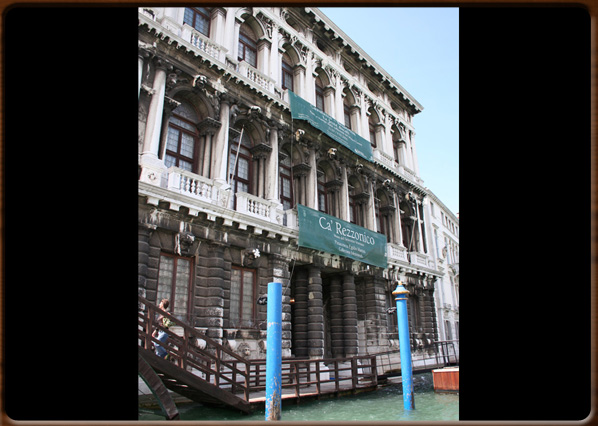
The church of San Moisè

Church of the Gesuiti, interior

Ca' Rezzonico.



No video
The Venetian Baroque style derives from the classic Renaissance style, but is especially rich in exuberant lush ornamentation that almost “invades” the buildings: garlands, scrolls, cherubs, grotesque masks and roses animate the main façade of buildings such as Ca' Pesaro (17th Century), the model Venetian Baroque palace. Ca’ Pesaro is an example of experimentation with the Baroque style: it has a flat façade enlivened by 3D motifs in stone creating interesting chiaroscuro effects, with recessed windows and groups of columns producing wonderful light and shade effects.
The diamond-shaped ashlar stones give the lower floors an appearance of solidity, while there are masses of putti (cupid-like figures) and feathered heads sculpted on the stone Baroque two-light windows. Some palaces have semi-circular two-light windows with a pediment decorated with a rose, another typical characteristic of Baroque architecture.
In the 1600s, at the height of the Baroque period, the Venetians’ passion for art became so strong that the lagoon city was an international art centre, a magnet attracting major art collectors from all over Europe.
1600 - 1700 - - rev. 0.1.7